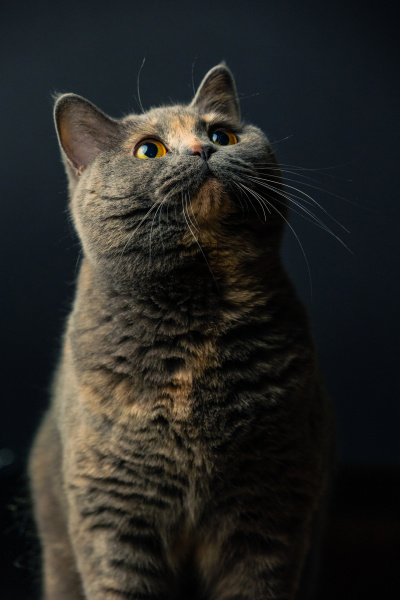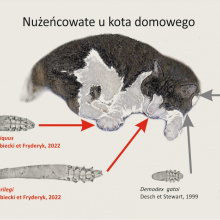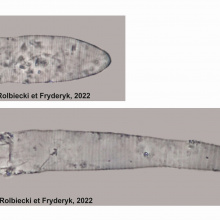
Photo by Alan Stocki/UG
The parasites of domestic animals associated with humans seem to be well understood. Meanwhile, dr hab. Joanna Izdebska, prof. UG, dr hab. Leszek Rolbiecki, prof. UG and dr Sławomira Fryderyk from the Department of Invertebrate Zoology and Parasitology, Faculty of Biology, University of Gdańsk, have discovered and described two parasites of the domestic cat that are new to science, belonging to the mites of the nematode family Demodecidae, which they named Demodex obliquus and Demodex murilegi.
As the researchers point out, different parasite species can cause different disease symptoms, and can also co-occur in the same cat, which, when developing nematodes, can be associated with a more complicated disease course.
- 'To date, two species of mites from this group have been known in the cat, i.e. Demodex cati, described back in the 19th century, and Demodex gatoi, described in 1999. These parasites can cause the dangerous skin parasitic disease, feline mange. In veterinary publications on mange, there have been references to the possibility that another specific species of this group, intermediate in size between D. cati and D. gatoi, may parasitise the skin of the cat. This is probably the now-described D. obliquus, hence its name - "obliquus", meaning intermediate,' - says dr hab. Joanna N. Izdebska, prof. UG, Head of the Department of Invertebrate Zoology and Parasitology, Faculty of Biology. - 'However, the team's research has yet to reveal the existence of a fourth, much larger than the previous nematodes, which has been named "murilegi", after one of the Latin names for the domestic cat - "murilegus"(literally - mouse catcher).'
Nematode mites are microscopic skin parasites commonly found in a variety of mammals and show specificity in their choice of location. The previously known feline roundworms are most commonly located in the scalp (D. cati) or epidermis of various body regions (D. gatoi). The currently described D. obliquus prefers the paw region and D. murilegi prefers the hairless scalp region (lips, chin, nose).
The results of the study were published in the prestigious journal Medical and Veterinary Entomology, published by the Royal Entomological Society in the UK.
The publication is available at: https://resjournals.onlinelibrary.wiley.com/doi/10.1111/mve.12628


